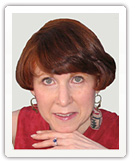Articles: Organizational Effectiveness Archives
Dangers Of Lack Of Diversity
In his excellent book, The New Pioneers: The Men and Women Who Are Transforming the Workplace and Marketplace, Thomas Petzinger, Jr. relates the rise and fall and rise again of ASSI (Architectural Support Services Inc.). The company, started in 1985, at first flew sky high by hiring a homogeneous group of architects. A look-alike staff resulted from a rigorous recruiting profile: only hot shot graduates from the best schools. The staff was similar in age, economic background and race.
The culture created was one of teamwork, autonomy and self-organization. Clearly, the intentions were good. The employees were encouraged to form their own project teams, train one another, even create their own job titles. Business boomed, and in 1994, the firm was featured on the cover of Fortune Magazine.
But tension was brewing. While intending to create a sense of fulfillment in the work, the owners unwittingly created a sense of entitlement among the employees. They asked, and they received, and then they complained that what they asked for was unsatisfactory. The owners' attempts to talk with each person individually to find a resolution only increased the tensions. It seems the similarity in backgrounds and attitudes of the employees fed into each other's resentments. Finally a large proportion of the employees walked out.
The owners came to the realization that by hiring a single kind of employee - what they thought was "the best kind" - they had set the stage for the problems that arose. So they shifted their hiring criteria, considering "personality over pedigree" to try to build a stronger staff.
The new approach to hiring was to look for qualified designers who demonstrated the ability to get along. Their schools or dates of graduation were not primary factors. This led to diversity, even though that was not the primary goal. By not focusing only on the "top" schools, more locals were hired, and the age-range widened bringing a greater spectrum of life experience and responsibilities.
What the owners found is that when business or personality problems arose, the diversity of views, rather than magnifying the problems as with the previous staff, tended to tone down the problems. Different views brought a greater number of potential solutions. Morale tended to recover quickly.
To adapt to the level of profitability of the work, ASSI began to use temporaries, contractors, free-lancers and part timers and found they adapted better to self-organization than the traditional employee. All of these arrangements made the company stronger.
This example gives food for thought to firms that believe they must hire only (or predominantly) lawyers or other professionals from the top of the class at the the "top schools." No research has ever demonstrated that they ultimately make the best mature professionals. A firm full of highly tuned technicians may not yield the best client or practice managers or the best rainmakers. They are not likely to have a very collaborative mindset.
Each firm needs to think seriously about what attributes are displayed by the people who succeed as all around professionals and people in their firm.
© Phyllis Weiss Haserot

